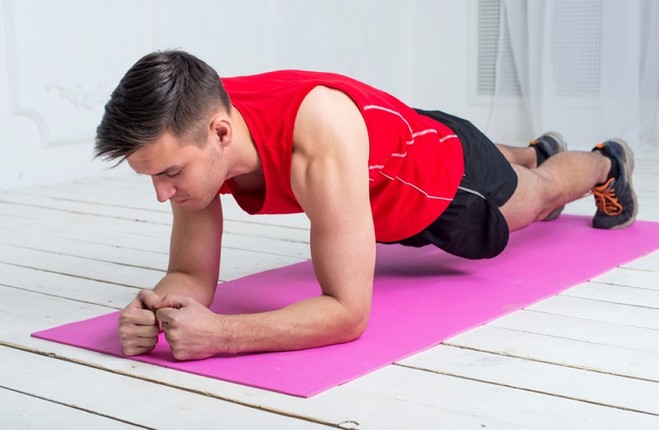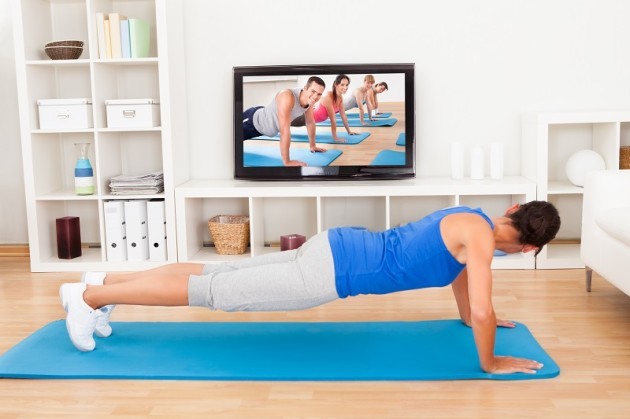CORE TRAINING HAS come a long way in the last few years but commercial gyms are still populated with ab cradles and weighted back extension machines aplenty and magazines are awash with “1,000 sit ups a day” challenges.
The reality is that the presence of a six-pack has very little correlation to how strong your core is or how well it functions, and while all the crunches in the world might leave you feeling the burn, they are relatively ineffective and can be hazardous to the health of your spine.
What is your core?
Despite many people’s associations with the word, your core consists of so much more than your rectus abdominis or six-pack muscles; it is a network of deep stabilisation and superficial movement muscles, your centre of gravity and from where all movement begins.
What does it do?
The muscles that make up your core have three important functions;
- to act as isometric and dynamic stabilisers for movement
- to transfer force from one extremity to another
- to initiate movement itself
Training your core as a prime mover alone (crunches, sit ups etc.) means that the deeper, stabilising muscles are getting neglected for the more superficial ones and you are missing out on developing the above functions. Essentially, the core should be trained to protect the spine and surrounding musculature from injury while performing static and dynamic movements. For example, if you need to be able to run, lift weights or even just pick your kid up without throwing your back out, you need the ability to effectively produce and transfer force, while maintaining stability in your spine.
How should you train it?
It could be argued that if you train closed-chain, compound movements in your workouts (squats, deadlifts etc.) you don’t need to directly work your core, but while these lifts are undoubtedly beneficial and effective in their own right, I believe that specific training to targets imbalances, weaknesses and alignment issues, has its place too.
If you want to be a functional and strong human being, please, throw out the ab cradles and start challenging your core in all three planes of motion. Add anti-extension, anti-rotation and anti-lateral flexion exercises to your workouts and your body will thank you for it!
Anti-what now?
- Anti-extension exercises: dead bugs, roll outs, plank variations
 Focus: To maintain a neutral spine and actively resist extension at your lower back. Good for developing stability in your lumbar spine and pelvis.
Focus: To maintain a neutral spine and actively resist extension at your lower back. Good for developing stability in your lumbar spine and pelvis.
- Anti-rotation exercises: pallof press, three point dumbbell row, single arm chest press
 Focus: To actively resist unwanted movement (rotation) in the lumbar spine. Thoracic spine rotation is important for general mobility, but the lumbar spine functions primarily as a stabiliser, therefore needs more strength and stability and less movement.
Focus: To actively resist unwanted movement (rotation) in the lumbar spine. Thoracic spine rotation is important for general mobility, but the lumbar spine functions primarily as a stabiliser, therefore needs more strength and stability and less movement.
- Anti-lateral flexion exercises: side plank, waiter’s carry, farmer’s walks
 Focus: To actively resist later flexion or side bending at your lumber spine. Great for developing strength in your lateral core, specifically your internal and external obliques and quadratus lumbordum.
Focus: To actively resist later flexion or side bending at your lumber spine. Great for developing strength in your lateral core, specifically your internal and external obliques and quadratus lumbordum.
And for bonus points…
- Hip flexion with a neutral spine exercises: jack-knives, pikes, hanging knee raises
 Focus: To maintain a neutral lumbar spine while simultaneously flexing at the hips. Learning how to flex at the hips without rounding or tucking under at the lower back carries over nicely to optimising your seated position at work and avoiding slumping into your chair for hours on end!
Focus: To maintain a neutral lumbar spine while simultaneously flexing at the hips. Learning how to flex at the hips without rounding or tucking under at the lower back carries over nicely to optimising your seated position at work and avoiding slumping into your chair for hours on end!
Next week’s article will cover these exercise techniques in detail and how to optimally implement them into your workout regimen. For now, choose one or two exercises to focus on; perform them as part of your warm up, with some myofascial release (here) and mobility work (here).
Remember that most of the tension in your core can be self-created, so use a lighter weight and give 100% of your attention to form.
Sarah Cremen is a personal trainer and physiotherapist based in David Lloyd Riverview in Dublin. For more health and fitness advice and tips, you can follow her on Facebook, Instagram or Twitter. Alternatively you can visit her website.
The42 is on Instagram! Tap the button below on your phone to follow us!


